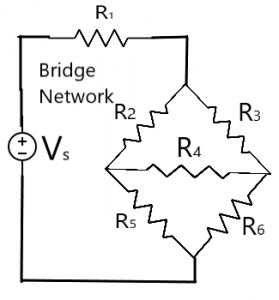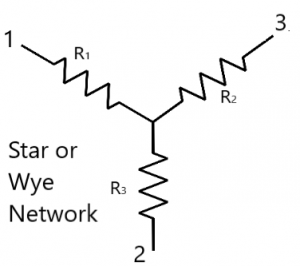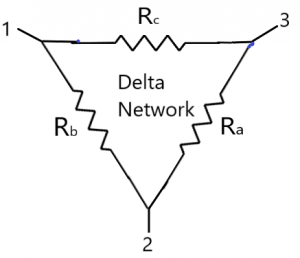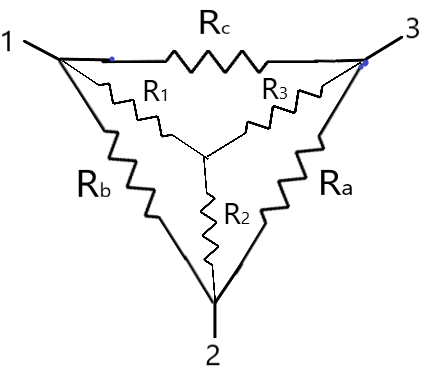Star-Delta Conversion
What will you learn?
- About star and delta network.
- Delta to Star Conversion.
- Star to Delta Conversion.
Sometimes resistors are neither in series nor in parallel. For example- The resistor R1 and R4 in the given bridge circuit. How do we combine such resistors? For solving these types of circuits we use conversion of three-terminal equivalent networks.

Wye(Y) or Star or T equivalent network
When either terminal of three branches is connected to a single node or point and forms a Y-like structure called Star Network. It is also known as Wye Network(Y) or T -Network because of its structure.

Delta or Pie Network
When all three branches are connected head to tail and form a triangular closed loop-like structure. Then this type of connection is called as Delta Network. It is represented as Δ. We can also rearrange it in Π like-structure thus also called as Π-Network

These are used in 3-Phase Networks, electrical filters, and matching networks. Now let us learn the conversion of Star Network to its equivalent Delta Network and vice versa to solve the circuit according to our requirements.
Delta to Star Conversion
Step 1: Superimpose a star network on the existing delta network and find the equivalent resistance in the star networks.
Step 2: To find the equivalent resistances in the wye network, we compare the two networks and make sure that the resistance between each pair of nodes in the delta network is the same as the resistance between the same pair of nodes in the wye network.
For terminals 1 and 2 in the given circuit diagram:
(for Star) R12=R1 +R2 [R3 is open]
(for Delta) R12=Rb ||(Rc +Ra )
Equating R12(star)=R12(Delta), we have
